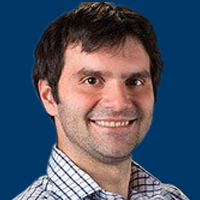Managing Ovarian Cancer Patients in the Future
Transcript:
Bradley J. Monk, MD, FACS, FACOG: So, we talked about surgery in the setting of recurrence. Thank you, Shannon. We talked about all 3 PARP inhibitors, and bevacizumab. We have now 4 targeted therapies that are FDA approved in recurrent ovarian cancer. And so, the era has arrived. As one final comment, what investigational combination strategy, in recurrent ovarian cancer, are you most excited about?
Shannon N. Westin, MD, MPH: I think I already referenced the PARPs and the antiangiogenics are very exciting. I think there are nice preclinical rationale about why they would each amplify the response to each other. Potentially, we could be expanding who benefits from PARP, by the combination.
Bradley J. Monk, MD, FACS, FACOG: What do you think, Dave? What’s your combination in recurrence?
David O’Malley, MD: I think the most exciting combination is PARP inhibitors with checkpoint inhibitors.
Bradley J. Monk, MD, FACS, FACOG: The challenge has been that the median progression-free survival, which is the endpoint on these trials, is about the same. So, the reason all of these wonderful trials are being done in the frontline setting is because the developers say, “Well, if the endpoints happen at the same time, and there are more patients in the frontline, which there always are, and if I can get more uptake and return on my investment, I’m preferentially going to do a frontline trial rather than a platinum-sensitive trial.” So, you’re right. But, the development has shifted to the frontline. What combination are you excited about?
Ursula Matulonis, MD: The combination of an antibody-drug conjugate, called mirvetuximab, plus pembrolizumab. This is a study that a number of us have been involved in. There are true response rates here. I think those types of immuno-oncology, plus unique other drugs—this one happens to be mirvetuximab—are exciting to me.
Bradley J. Monk, MD, FACS, FACOG: I’m asked, all the time, where we are and where we are going. We were in an angiogenesis world that will close, ultimately, assuming GOG-0218 gets approved. We live in a PARP space. We live in a PARP world. We have 3 approved. And, we’re developing immuno-oncology therapies. So, what’s next? We have ADC. ADC is the next wave. I’m excited about that and, obviously, this FORWARD I study, which is folate receptor antibody drug conjugate versus physician’s choice chemotherapy. We’ll close enrollment in recurrent ovarian cancer very soon. I know you are very passionate about it. What combination are you interested in?
Matthew Powell, MD: The big issue I have is that I like all of them. I’m going to find out what’s the right patient, and I’m going to personalize medicine. I agree with Shannon. The data are quite exciting. I’m excited to be an oncologist, at this point. I’m excited to have treatment options for my patients.
Ursula Matulonis, MD: That’s true.
Bradley J. Monk, MD, FACS, FACOG: It’s actually satisfying to treat ovarian cancer patients. This has been very informative. I want to thank the 4 of you for being with us today. On behalf of OncLive®, thank you very much.
Transcript Edited for Clarity



